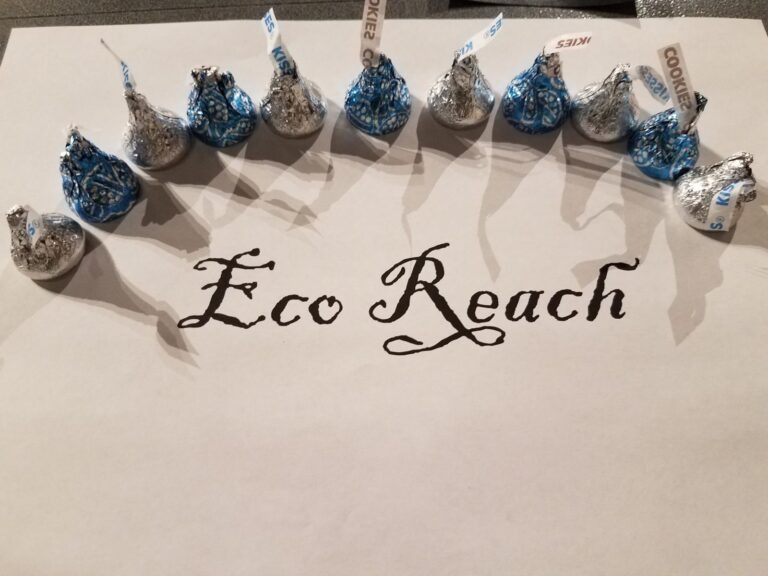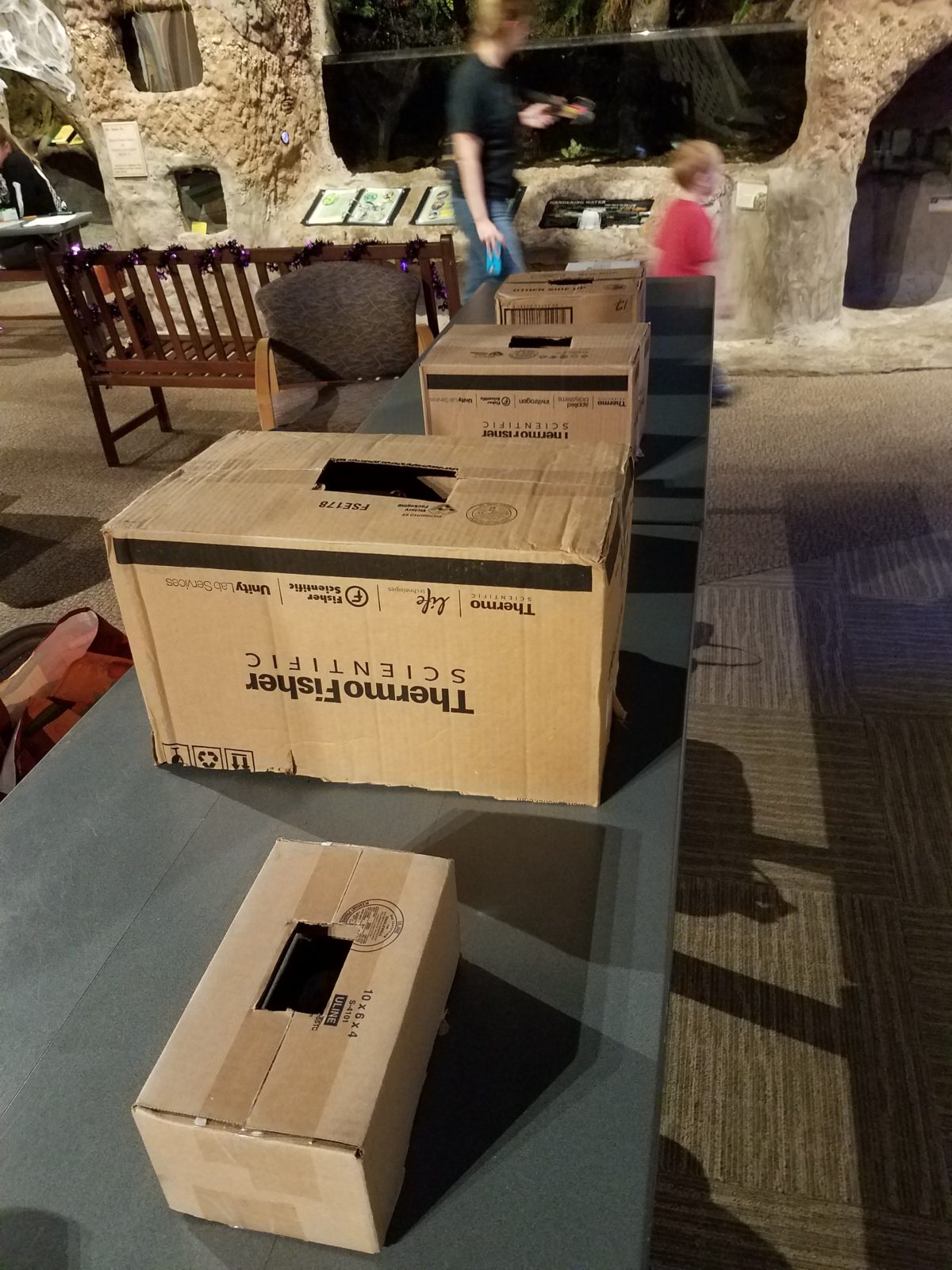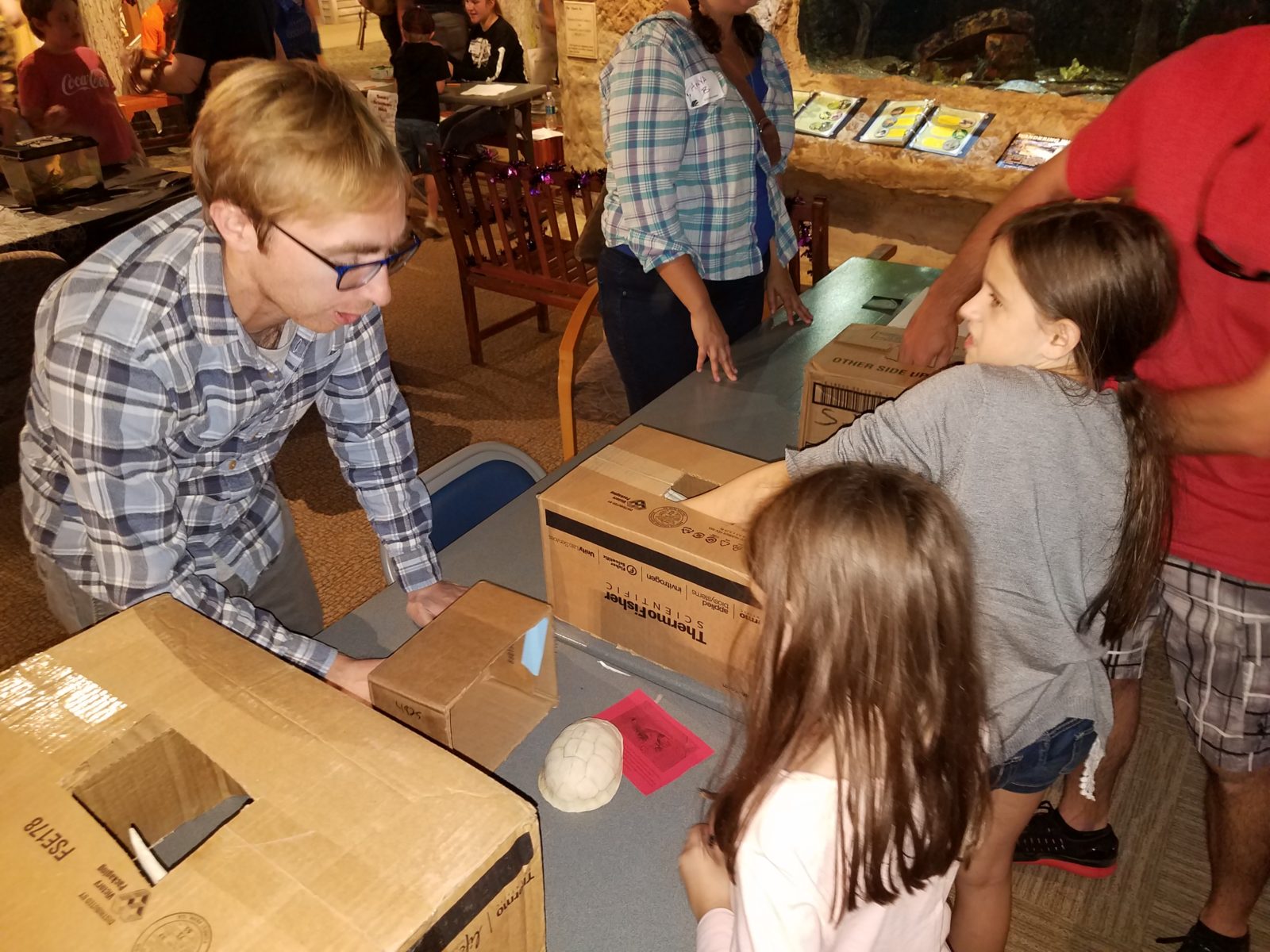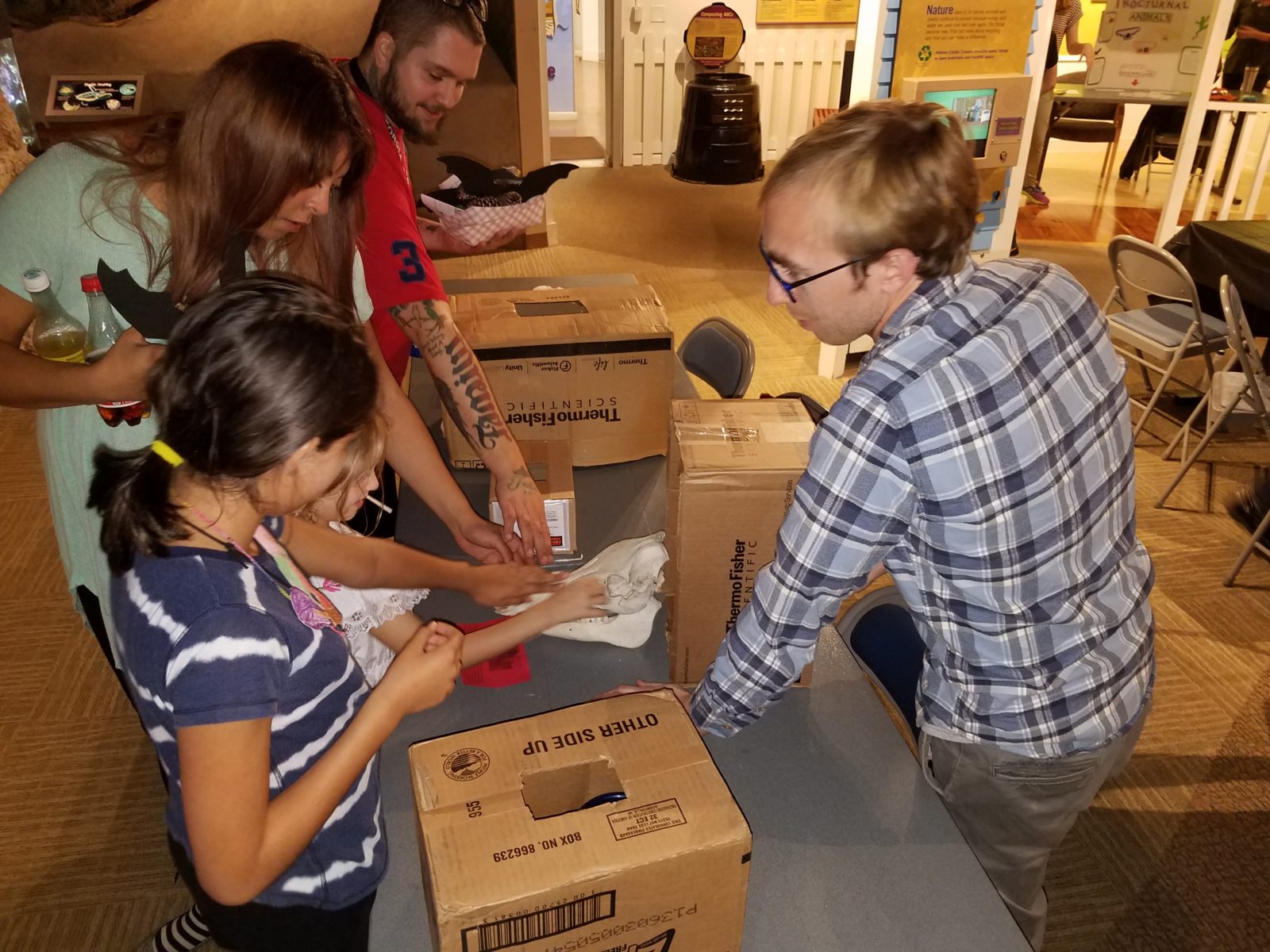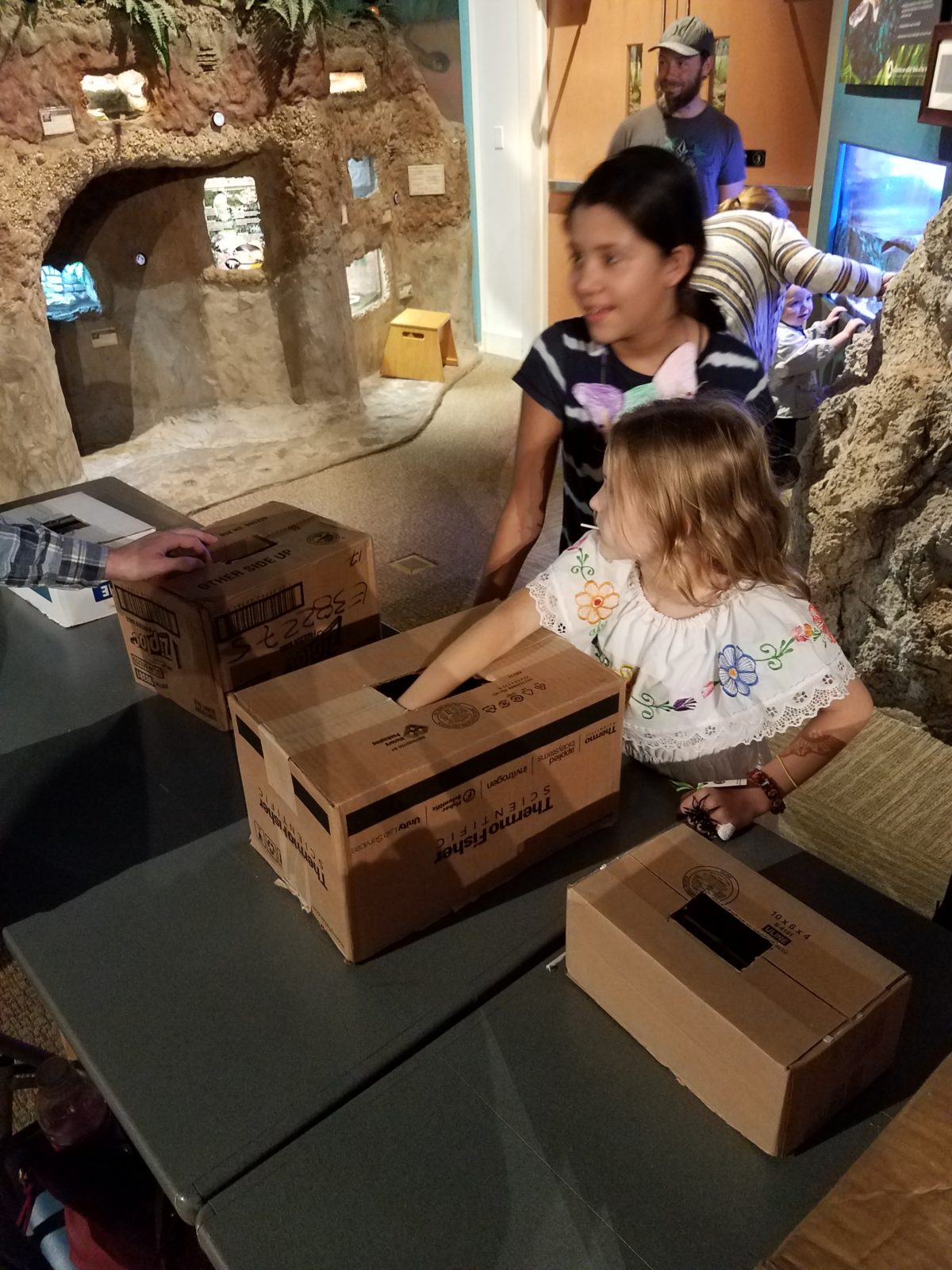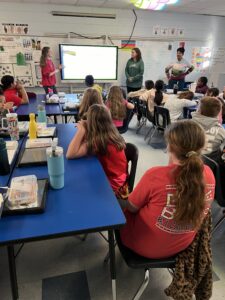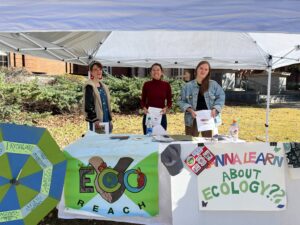This past Saturday, EcoReach got into the Halloween spirit at Sandy Creek Nature Center’s annual Scary, Oozy, Slimy Day! Astronauts, superheroes, pokemon, jedi knights, and princesses all showed up to learn about the animals and plants of “The Not so Scary Forest.”
EcoReach put a twist on a classic Halloween party game with an activity called “Facing Your Fears: The Mystery Box Game,” which challenged families to reach inside cardboard boxes and identify animal specimens using their sense of touch and knowledge of local wildlife.
The mystery specimens included a shed snake skin from the pigmy rattlesnake (Sistrurus miliarius). Some kids thought that the snake skin felt like tissue paper and others talked about how they had seen similar sheds in their backyards. Closer inspection of the snake skin revealed scales and an intricate color pattern on the dorsum, which allows the snake to hide in leaf litter on the forest floor and ambush prey. Learn more about the smallest rattlesnake in Georgia here!
Another mystery box contained a turtle shell. The smooth, rock-shaped carapace was easily recognized and some kids shared stories of exotic turtles that they had as pets or turtles that they had seen basking on logs along the river. The bony scutes of the carapace protect the turtle from predators. Learn more about turtle diversity in Georgia here!
Two of the mystery boxes contained the skulls of large mammals. The pointy antlers on the top of one of the skulls helped a lot of kids guess that it belonged to a white-tailed deer (Odocoileus virginianus). The other skull also had pointy protrusions, but these were located anteriorly, near the snout. These tusks belonged to the feral pig (Sus scrofa), which is an invasive species in Georgia. Feral pigs can be nest predators of native bird species and disturb the soil by rooting for food. Learn more about the impacts of feral pigs here!
One of the most challenging mystery boxes had specimens inside Tupperware containers—and for good reason! Instead of feeling these mystery specimens, kids were asked to shake the containers and listen to the sound of the material moving around for clues. Although eggs, baby earthworms, and dirt were great guesses, the containers actually contained poop! Most kids recognized the peculiar, pellet-like poop of the white-tailed deer, but not many had ever seen the “very hairy,” tubular poop of the coyote. Remember that safety is always a priority when it comes to examining scat, we share many parasites with other mammals! Learn more about scat and tracks here!
The final mystery specimen was hard and smooth like the turtle shell and the skull, but it also terminated in a pointy spiral. Although it looked like a sea shell that may provide a home for a hermit crab, the large shell actually belonged to a giant terrestrial snail! Among terrestrial snail species there is a great variety in diet: some snails are important detritivores (eat decaying plants and fungi), others are herbivores (eat living vegetation), and some are carnivores (eat other animals)! Learn more about the snails here!

